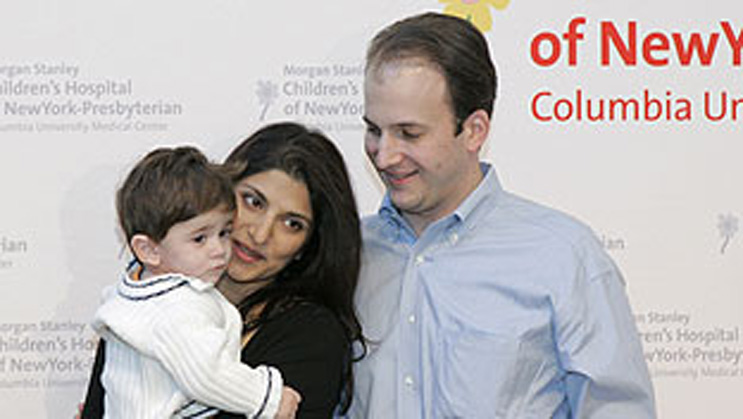Healthy Baby after Kidney Transplant and Another on the Way
Lede:
As a high school student, Fanny Powers suffered from recurring bladder infections and soon discovered that her kidneys weren't working properly. “I had none of the difficult symptoms associated with kidney failure, just low protein in my urine,” says Fanny. “But there was definitely something wrong.”
Firefighter Is Key to Historic Three-Way Kidney Swap
Lede:
Kidney swaps enable incompatible donors to give to strangers, in return for a matched kidney that can help their own loved ones or family members. The chain of giving can start with a single altruistic donor. Thirty-nine-year-old Long Island firefighter John McGuinness recently became the lynchpin in a rare three-way kidney swap, performed at NewYork-Presbyterian/ Columbia.
Lisa Goetze Gets Going with Gastric Bypass Surgery
Lede:
Growing up, Lisa Goetze always detested gym class. "I never liked to sweat. I believed running was pointless unless you were being chased by someone with a knife." In fact, running was never an option for Ms. Goetze. For her, the mere act of walking was a battle. Throughout her life Ms. Goetze had struggled with morbid obesity. Her world as an adult consisted of commuting from home to work, and work to home. Venturing anywhere beyond those places was rare and extremely difficult because at 550 pounds she could only stand for a limited amount of time. In 2000, Ms Goetze underwent gastric bypass surgery—a decision that changed her life, and more importantly, her attitude regarding healthy living and remaining active. Today, she is a 32-year-old full-time business professional and part-time personal trainer in Bergen County, New Jersey. After a very long and difficulty journey, she has learned to appreciate a full routine and a little sweat in her life.
Video-Assisted Thoracic Surgery for Early-Stage Lung Cancer
Lede:
When Leah Richter of Englewood, NJ lost her voice during the spring she was referred to an ear-nose-and-throat specialist in Englewood. "He diagnosed a reflux problem and put me on 20 mg of Prilosec. It didn't help."
A colleague then suggested that Mrs. Richter see a second ENT specialist, who noticed that her right vocal cord didn't look quite as "good" as the left. He ordered MRI and CT scans of her neck and lungs. The CT radiologist saw a lesion in her lung that was suspicious for lung cancer and referred her for a scan at Columbia Kreitchman PET Center. PET scanning is a new imaging technique used to differentiate benign from malignant tumors. Sure enough, Mrs. Richter's PET scan showed an abnormal lesion, and a needle biopsy confirmed that the lesion was malignant.
A colleague then suggested that Mrs. Richter see a second ENT specialist, who noticed that her right vocal cord didn't look quite as "good" as the left. He ordered MRI and CT scans of her neck and lungs. The CT radiologist saw a lesion in her lung that was suspicious for lung cancer and referred her for a scan at Columbia Kreitchman PET Center. PET scanning is a new imaging technique used to differentiate benign from malignant tumors. Sure enough, Mrs. Richter's PET scan showed an abnormal lesion, and a needle biopsy confirmed that the lesion was malignant.





